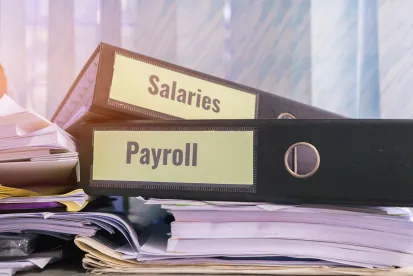On April 3, 2020, the Small Business Administration (the “SBA”) published its Interim Final Rule (the “Interim Rule”) governing the origination of “paycheck protection loans” under the newly created small business lending program, referred to as the Paycheck Protection Program (the “PPP”), that was created pursuant to the Coronavirus Aid, Relief and Economic Security Act (the “CARES Act”). The Interim Rule is generally consistent with the terms of the PPP set forth in the CARES Act; however, it does include some important updates. Below is a summary of the major provisions of the Interim Rule, a complete copy of which can be found by clicking here.
Effective Date.
April 3, 2020. Although the Interim Rule is effective, the SBA is soliciting comments from interested members of the public, indicating that the Interim Rule may be revised in the future.
Definitive Terms.
Certain significant terms applicable to all PPP loans are summarized below:
|
|
Terms |
|
SBA-Guaranty |
100% |
|
Interest Rate |
1.00% |
|
Term |
2 years |
|
Loan Deferral |
Yes, no payments required for six months following the date of loan disbursement (interest continues to accrue during deferral) |
|
Collateral/Personal Guarantee |
None |
|
SBA Fees |
None |
|
Use of Proceeds |
75% or more on payroll costs |
|
Loan Forgiveness |
75% or more of loan forgiveness must represent payment of payroll costs |
Which Lenders Are Eligible to Originate PPP Loans.
-
Current 7(a) Lenders. All previously approved SBA Section 7(a) lenders are automatically approved to make PPP loans on a delegated basis.
-
Additional Authorized Lenders.
-
Banks, federally insured credit unions and farm credit system institutions are automatically eligible upon the transmission of “SBA Form 3506 (CARES Act Section 1102 Lender Agreement)” to the SBA, unless it currently is designated in troubled condition or is subject to an enforcement order for unsafe or unsound lending practices by its primary federal regulator.
-
Additional depository or non-depository financing providers are also eligible to participate, provided that such an entity (a) originates, maintains and services business loans or other commercial financial receivables and participation interests, (b) has a formalized compliance program, (c) applies the Bank Secrecy Act and anti-money laundering requirements (“BSA/AML”) equivalent to that of a bank, (d) has been operating since February 15, 2019 and (e) has originated, maintained and serviced more than $50 million in business loans or other commercial financial receivables during a consecutive 12 month period in the past three years, or is a contracted service provider to any bank and is in good standing with the appropriate federal regulator.
-
Borrower Eligibility.
The Interim Rule confirms that the following entity types operating as of February 15, 2020 and which paid salaries and payroll taxes are eligible to obtain a loan under the PPP, subject to the employee size limitations noted below:
-
A “small business concern” as defined in by the Small Business Act, and subject to the SBA’s affiliation rules unless specifically waived;
-
a 501(c)(3) tax-exempt nonprofit organization;
-
a 501(c)(19) tax-exempt veterans organization;
-
a Tribal business concern described in section 31(b)(2)(C) of the Small Business Act; or
-
any other business.
-
In addition, the entity must (i) have fewer than 500 employees whose principal place of residence is in the U.S. or (ii) be a business that operates in a certain industry that meets the applicable SBA employee-based size standards for that industry.
Borrowers with an Outstanding EIDL.
If a borrower received an Economic Injury Disaster Loan (“EIDL”) between January 31, 2020 through April 3, 2020, a borrower can apply for a PPP loan. If the EIDL was not used for payroll costs, it does not affect the borrower’s eligibility for a PPP loan. However, if a borrower’s EIDL was used for payroll costs, the PPP loan must be used to refinance an outstanding EIDL.
Ineligible Borrowers.
-
Existing Section 7(a) Eligibility Restrictions Apply. In addition, the Interim Rule provides that existing SBA rules on borrower eligibility for Section 7(a) business loans are applicable to the PPP. We note that existing SBA rules provide that financial businesses primarily engaged in the business of lending, such as banks and finance companies are not eligible PPP borrowers. As a result, notwithstanding the broader definition in the CARES Act providing for PPP eligibility to “any business concern” (which could have included financial institutions), the Interim Rule’s use of the existing Section 7(a) rules on eligible borrowers for PPP eligibility precludes financial businesses primarily involved in the business of lending such as banks being eligible PPP borrowers.
-
General Ineligibility Restrictions. A borrower is ineligible for a PPP loan if:
-
it is engaged in any activity that is illegal under federal, state or local law;
-
it is a household employer (individuals who employ household employees such as nannies or housekeepers);
-
an owner of 20% or more of the equity of the borrower is incarcerated, on probation, on parole; presently subject to an indictment, criminal information, arraignment, or other means by which formal criminal charges are brought in any jurisdiction; or has been convicted of a felony within the last five years; or
-
the borrower, or any business owned or controlled by the borrower or any of its owners, has ever obtained a direct or guaranteed loan from the SBA or any other federal agency that is currently delinquent or has defaulted within the last seven years and caused a loss to the agency.
-
Permissible Use of Loan Proceeds.
The Interim Rule lists the following as permitted uses of loan proceeds:
-
payroll costs;
-
costs related to the continuation of group health care benefits during periods of paid sick, medical or family leave, and insurance premiums;
-
mortgage interest payments (but not prepayments or principal payments);
-
rent payments;
-
utility payments;
-
interest payments on any debt obligations (incurred before February 15, 2020); and/or
-
refinancing an EIDL obtained between January 31, 2020 and April 3, 2020.
75% of Loan Proceeds to be used for Payroll Costs.
The Interim Rule provides that the SBA has determined that 75% of loan proceeds are to be used to cover payroll costs. The Interim Rule does not specifically set forth a consequence(s) of not meeting this threshold. However, as described below, the amount of loan proceeds used to cover payroll costs clearly impacts the potential amount of loan forgiveness as at least 75% of the amount of eligible loan forgiveness must represent payment on payroll costs. As a result, if a borrower uses less than 75% of loan proceeds on payroll costs, it will reduce the total amount eligible for loan forgiveness.
What Qualifies as Payroll Costs.
“Payroll costs” are defined as consisting of compensation to employees (whose principal place of residence is the U.S.) in the form of:
-
salary, wages, commissions or similar compensation;
-
cash tips or the equivalent (based on employer records of past tips or, in the absence of such records, a reasonable, good-faith employer estimate of such tips);
-
payment for vacation, parental, family, medical, or sick leave; allowance for separation or dismissal;
-
payment for the provision of employee benefits consisting of group health care coverage, including insurance premiums and retirement;
-
payment of state and local taxes assessed on compensation of employees; and
-
for an independent contractor or sole proprietor, wage, commissions, income or net earnings from self-employment or similar compensation.
What Does Not Qualify as Payroll Costs.
“Payroll costs” do not include the following:
-
any compensation of an employee whose principal place of residence is outside of the U.S.;
-
the compensation of an individual employee in excess of an annual salary of $100,000, prorated as necessary;
-
federal employment taxes imposed or withheld between February 15, 2020 and June 30, 2020, including the employee’s and employer’s share of the Federal Insurance Contributions Act (FICA) and Railroad Retirement Act (RRA) taxes, and income taxes required to be withheld from employees; and
-
qualified sick and family leave wages for which a credit is allowed under the Families First Coronavirus Response Act (FFCRA).
Methodology for Calculating Maximum Loan Amount.
-
Step 1 – Add all payroll costs from the last 12 months for employees whose principal place of residence is the U.S.
-
Step 2 – Subtract from the amount calculated in Step 1 any compensation paid to an employee in excess of an annual salary of $100,000 and/or any amounts paid to an independent contractor or sole proprietor in excess of $100,000 per year.
-
Step 3 – Calculate average monthly payroll costs (divide the amount from Step 2 by 12).
-
Step 4 – Multiply the average monthly payroll costs from Step 3 by 2.5.
-
Step 5 – Add the outstanding amount of an EIDL made between January 31, 2020 and April 3, 2020, less the amount of any “forgivable advance” under an EIDL (because it does not have to be repaid).
Independent Contractors Are Not Employees for Calculation of Loan Amount.
Independent contractors are not taken into account for purposes of PPP loan calculations.
-
Loan Forgiveness.
-
Additional Guidance Expected. Although the Interim Rule provides the following information on loan forgiveness, it also states that the SBA will be providing additional guidance on loan forgiveness in the future.
-
Amount of Loan Forgiveness. Principal and interest is eligible for forgiveness, based on the use of loan proceeds during the 8-week period from the date of the loan and subject to the maintenance of employee and salary levels. Consistent with the CARES Act, payments on the following items are eligible for loan forgiveness: (i) payroll costs; (ii) interest payments on mortgages incurred before February 15, 2020; (iii) rent payments on leases dated before February 15, 2020; and (iv) utility payments under service agreements dated before February 15, 2020.
-
75/25 Rule – Eligible Use Limitations. To be eligible for full loan forgiveness, a borrower must use at least 75% of PPP loan proceeds on payroll costs. Any non-payroll cost payments made by a borrower on mortgage interest, rent and utilities must constitute no more than 25% of the eligible loan forgiveness amount. A borrower’s failure to comply will result in a reduction in the amount of loan forgiveness.
-
Independent Contractors. While borrowers are allowed to make payments to independent contractors as part of their eligible payroll costs, these payments will not be eligible for loan forgiveness. The SBA reasons that independent contractors can independently apply for a PPP loan.
-
EIDL Advances. Proceeds from any advance up to $10,000 on an EIDL will be deducted from the loan forgiveness amount on the PPP loan.
-
Borrower Application and Process.
-
A borrower must submit the following documents:
-
SBA Form 2483 (PPP Application Form); and
-
payroll processor records, payroll tax filings, or supporting documentation, such as bank records, sufficient to demonstrate the qualifying payroll amount, or income and expenses from sole proprietors.
-
-
An authorized representative of the borrower must certify in good faith as to the following:
-
the borrower was in operation on February 15, 2020 and had employees for whom it paid salaries and payroll taxes or paid independent contractors, as reported on a Form 1099-MISC;
-
current economic uncertainty makes the loan request necessary to support the ongoing operations of the borrower;
-
the funds will be used to retain workers and maintain payroll or make mortgage interest payments, lease payments and utility payments, and not more than 25% of loan proceeds will be used for non-payroll costs;
-
the borrower understands that if the funds are knowingly used for unauthorized purposes, the federal government may hold borrower legally liable;
-
documentation verifying the number of full-time equivalent employees and confirming that documentation will be provided verifying use of proceeds during the 8-week period following origination;
-
loan forgiveness will be provided for the sum of documented payroll costs, covered mortgage interest payments, covered rent payments and covered utilities, with not more than 25% of the forgiven amount being for non-payroll costs;
-
during the period beginning on February 15, 2020 and ending on December 31, 2020, the borrower has not and will not receive another PPP loan;
-
the borrower certifies that the information provided in the application and the information provided in all supporting documents and forms is true and accurate in all material respects and that knowingly making a false statement to obtain a guaranteed loan from the SBA is punishable under law; and
-
the borrower acknowledges that the lender will confirm the eligible loan amount using tax documents submitted and these tax documents are identical to those submitted to the Internal Revenue Service. The borrower understands that the lender can share the tax information with the SBA’s authorized representatives.
-
Lender Information, Underwriting and Process.
-
Documentation. The lender must electronically submit SBA Forms 2483 (PPP Loan Application) and 2484 (PPP Application for 7(a) Loan Guaranty) to the SBA for each PPP loan origination.
-
Underwriting. Each lender must:
-
Confirm receipt of borrower certifications noted above;
-
Confirm receipt of information demonstrating that a borrower had employees for whom the borrower paid salaries and payroll taxes on or around February 15, 2020;
-
Confirm the dollar amount of average monthly payroll costs for the preceding calendar year by reviewing the payroll documentation submitted with the borrower’s application; and
-
Follow applicable BSA/AML requirements.
-
-
BSA/AML Requirements.
-
Banks and federally-insured credit unions must continue to follow their existing BSA/AML protocols when originating PPP loans to either new or existing customers who are eligible borrowers under the PPP. PPP loans for existing customers will not require reverification, unless otherwise indicated by the institution’s risk-based approach to BSA/AML compliance.
-
Entities that are not presently subject to BSA/AML requirements must, prior to engaging in PPP lending activities, establish a BSA/AML compliance program equivalent to that of a bank.
-
-
Waiver of SBA’s Lending Criteria. Lenders will not be required to comply with the SBA’s standard lending requirement that requires evaluation of a borrower’s ability to obtain “credit elsewhere.”
-
Hold Harmless – Lenders May Rely on Borrower’s Certifications. The lender does not need to conduct any verification if the borrower submits documentation supporting its request for loan forgiveness and attests that it has accurately verified the payments for eligible costs. The SBA will hold a lender harmless that relies on such borrower documents and attestation.
-
E-Signatures. Lenders are authorized to utilize e-signatures and e-consents.
-
No Further Requirements. Each lender’s underwriting obligations under the PPP are limited to the items noted above.
-
Processing Fees. The Interim Rule confirms that the SBA will pay the following processing fees to lenders: (i) 5% for loans not exceeding $350,000; (ii) 3% for loans exceeding $350,000 and less than $2 million; and (iii) 1% for loans of $2 million or more.
-
Agent Fees. Agent fees are to be paid by lenders out of the processing fees received from the SBA. Agents may not collect fees from the borrower or from PPP loan proceeds.
-
Secondary Sales. A PPP loan may be sold for a premium or discount in the secondary market after it is fully disbursed. The SBA will issue additional guidance on advance purchases in the secondary market.
-
SBA Purchases in Advance. A lender can request that the SBA purchase the expected forgiveness amount of a PPP loan or loan pool at the end of week seven (7) following origination.








 />i
/>i
